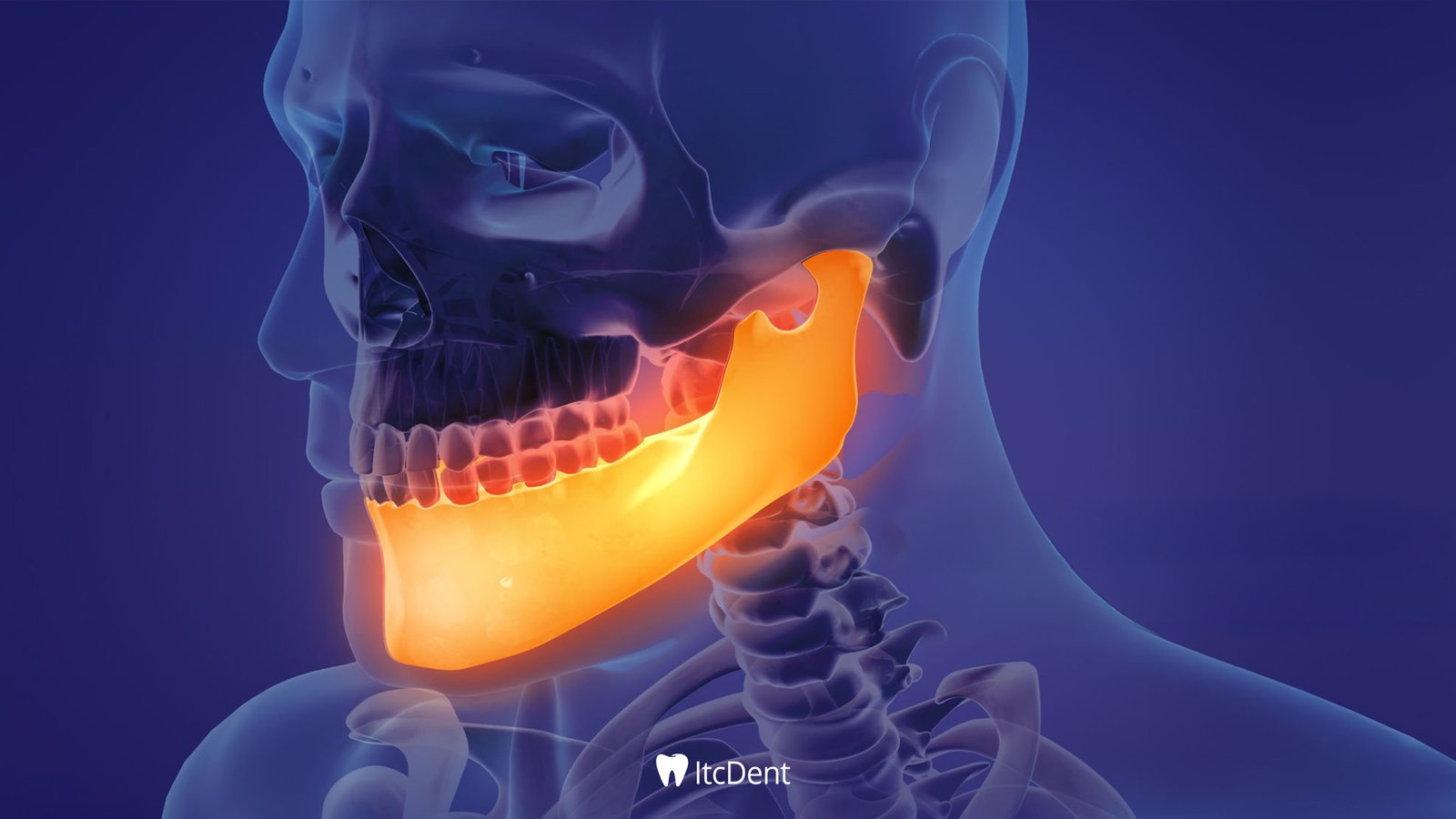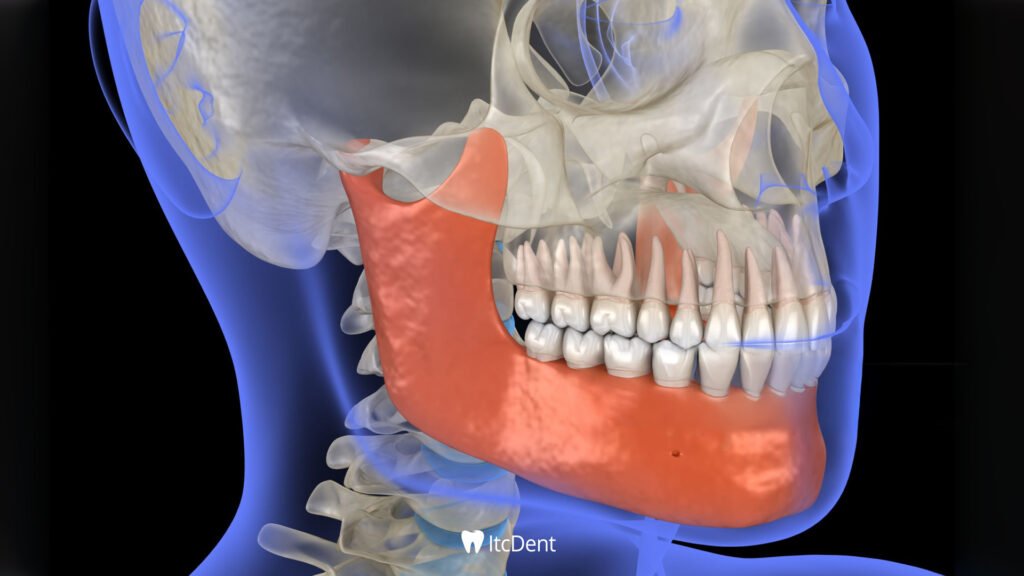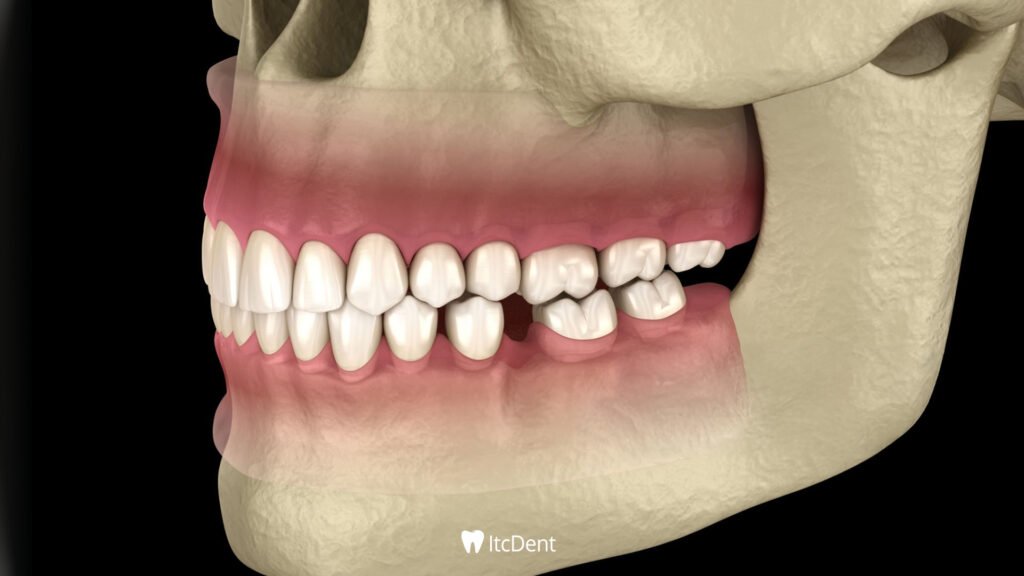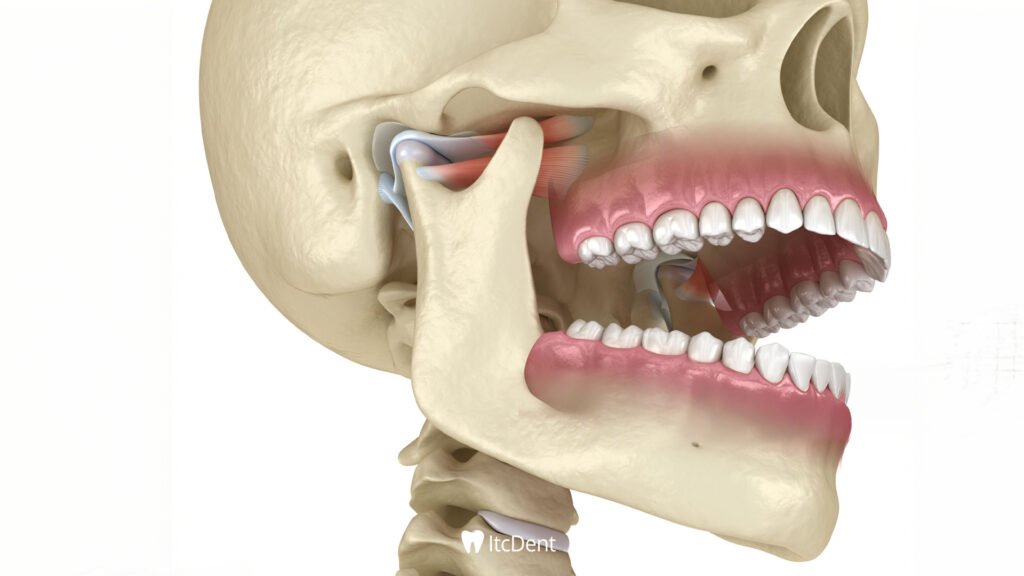
Jawbone Oscillation
When it comes to dental health, most people first think of their teeth: cavities, gum problems, or the whiteness of their teeth. However, the primary structure that sustains oral health is the jawbone, which supports the roots of our teeth like a foundation. Without a strong jawbone, it’s impossible for teeth to remain healthy or perform their functions properly. The jawbone holds teeth in place, supports chewing power, and maintains oral integrity.
The weakening or loss of this vital structure can lead not only to tooth loss, but also to chewing disorders, aesthetic problems, and a significant decrease in quality of life. Jawbone loss is often advanced by the time it’s detected, and treatment requires a long process. Therefore, it’s crucial to be aware of the problem, recognize its symptoms, and take preventative measures.
What is Jawbone Resorption?
Jawbone resorption is medically known as “alveolar bone resorption.” Simply put, it’s the gradual thinning, loss of density, and weakening of the jawbone, which surrounds the roots of the teeth and holds them in place. In a healthy mouth, the jawbone tightly encases the roots of the teeth, ensuring both the teeth’s strength and the smooth functioning of chewing. However, when this bone tissue begins to disappear for some reason, the teeth lose their support, and the oral structure begins to change.
Jawbone resorption may go unnoticed at first because the process is usually silent. However, over time, effects such as loose teeth, gaps, poor denture fit, and even a collapsed facial feature can occur. This can directly affect not only dental health but also a person’s eating habits, speech patterns, and self-confidence.
As bone weakens, tooth loss becomes more likely, and each lost tooth further accelerates bone loss in the jaw. This vicious cycle can lead to serious consequences if not addressed early. Therefore, bone loss is not just an oral problem; it is also crucial for overall health, aesthetic appearance, and quality of life.

Symptoms of Jawbone Loss
Jawbone loss is often a silent process. In the early stages, most people may not notice any symptoms. However, over time, significant changes occur that affect both oral health and facial aesthetics. These symptoms remind us of the vital role the jawbone plays in the body.
- Tooth loss: The jawbone holds the teeth firmly in place by their roots. However, when this support weakens, teeth begin to loosen and can eventually fall out. This creates a serious problem not only aesthetically but also functionally.
- Chewing difficulties: As the jawbone resorbs, the strength of the teeth decreases, and chewing function is impaired. Eating hard foods, in particular, becomes difficult, and over time, the individual may be forced to eat only soft foods.
- Facial contour changes: When the jawbone is healthy, it fills and supports the lower face. However, as the loss progresses, the cheeks become sunken, wrinkles around the lips increase, and the person may appear older than they actually are.
- Denture malalignment: Jaw bone loss is more noticeable in denture wearers. The denture may not fit properly, slip, warp, or cause pain. This can cause significant discomfort in daily life.
- Jaw pain and tenderness: For some people, bone loss can cause pain or a feeling of pressure. This discomfort can be particularly pronounced when eating or using dentures.
In short, jaw bone loss is a problem that affects not only the mouth but also the facial appearance and quality of life. Therefore, it’s crucial to see a dentist immediately when you notice symptoms.
What Causes Jawbone Loss?
Jawbone loss can occur for many different reasons. One of the most common is tooth loss, as the jawbone maintains its vitality thanks to the signals it receives from the tooth roots. When a tooth is extracted or lost, the bone in that area no longer receives stimulation and begins to weaken over time. Gum disease is also a significant factor. Advanced gingivitis, particularly periodontitis, can damage both the gums and the jawbone that supports the teeth, leading to bone loss.
Traumas, such as blows to the jaw, accidents, or incorrect tooth extractions, can also cause jawbone loss. As with all bones, the aging process naturally causes a decrease in jawbone density; this condition progresses more rapidly when combined with tooth loss or inflammation. Furthermore, long-term, ill-fitting, or loose dentures can put pressure on the bone and trigger bone loss. Additionally, systemic diseases such as osteoporosis and diabetes, immune system problems, or genetic predisposition can also negatively impact jawbone health.

How is Jawbone Loss Diagnosed?
Jawbone loss is often difficult to detect on your own; it usually occurs during routine dental checkups. During a checkup, a dentist may suspect changes in the bone while examining the teeth and gums. X-rays or 3D CT scans are often used for a more definitive diagnosis.
These methods allow for a clear picture of jawbone density, thickness, and the extent of potential loss. Regular dental checkups are crucial, as early detection of jawbone loss offers significant advantages in halting its progression and initiating appropriate treatment.
Can Jawbone Loss Be Treated?
Yes, jawbone loss is a treatable condition; however, the treatment method varies depending on the extent of the loss and the patient’s general condition. If loss is detected early, bone grafting, commonly known as bone meal, can be used to support the lost area. This method is often preferred in preparation for implant treatment. For missing teeth, implants offer both aesthetic and functional solutions. They act like natural tooth roots, stimulating the jawbone and preventing further bone loss.
If there is extensive bone loss in the upper jaw, a sinus lift is performed to raise the sinus cavity and add bone meal to create a solid space for the implant. In more advanced cases, more extensive procedures, such as advanced surgery or even a jawbone transplant, may be considered. Therefore, the treatment process varies from person to person; the key is to see a dentist promptly and prevent further bone loss.

Can Jawbone Loss Be Treated?
Yes, jawbone loss is a treatable condition; however, the treatment method varies depending on the extent of the loss and the patient’s overall condition. If loss is detected early, bone grafting, commonly known as bone powder, can be used to support the lost area. This method is often preferred in preparation for implant treatment. For missing teeth, implants offer both aesthetic and functional solutions. They act like natural tooth roots, stimulating the jawbone and preventing further loss.
If there is extensive bone loss in the upper jaw, a procedure called a sinus lift elevates the sinus cavity and adds bone graft to create a solid space for the implant. In more advanced cases, advanced surgical procedures, or even more extensive procedures such as a jawbone transplant, may be considered. Therefore, the treatment process varies from person to person; the key is to see a dentist at the right time to prevent further bone loss.

